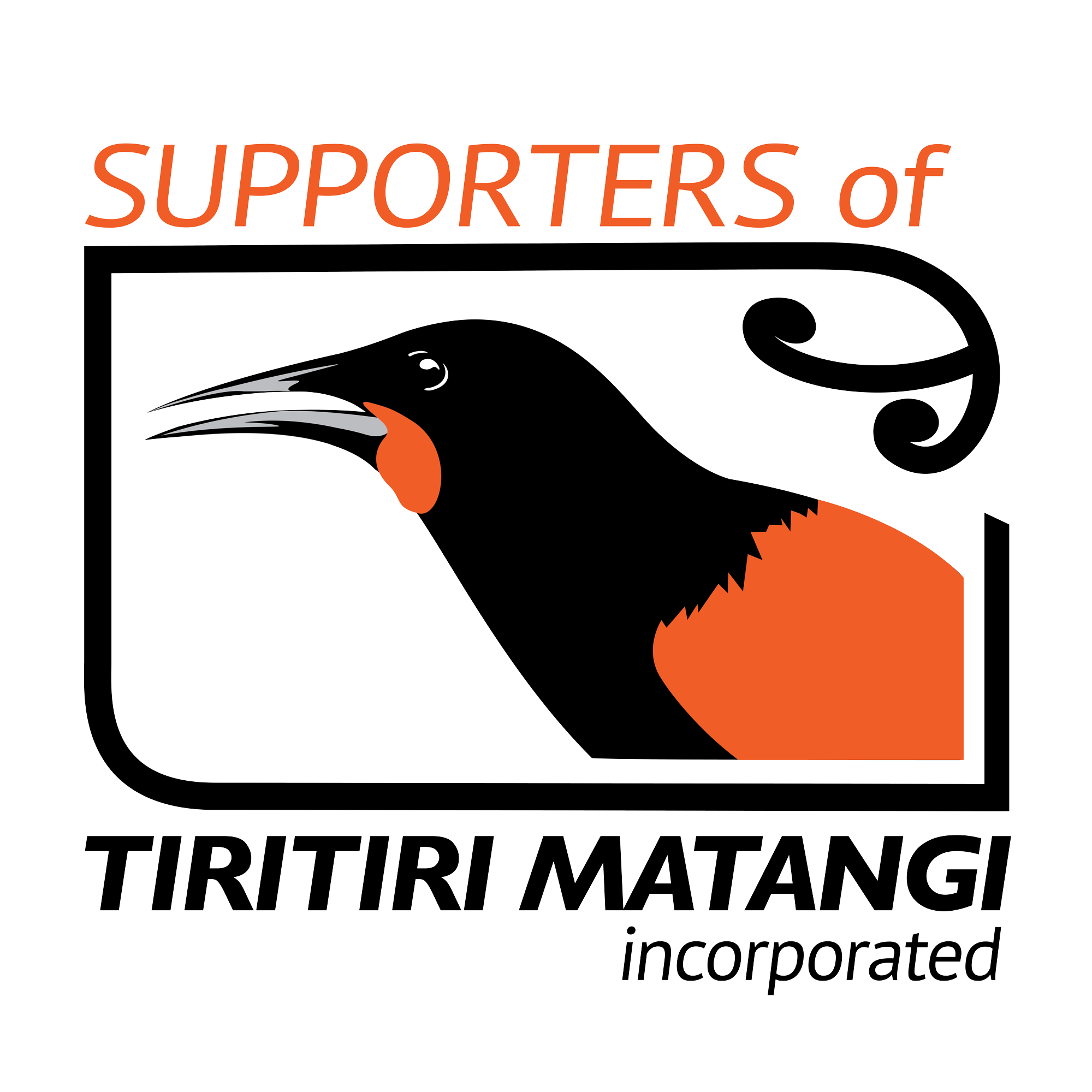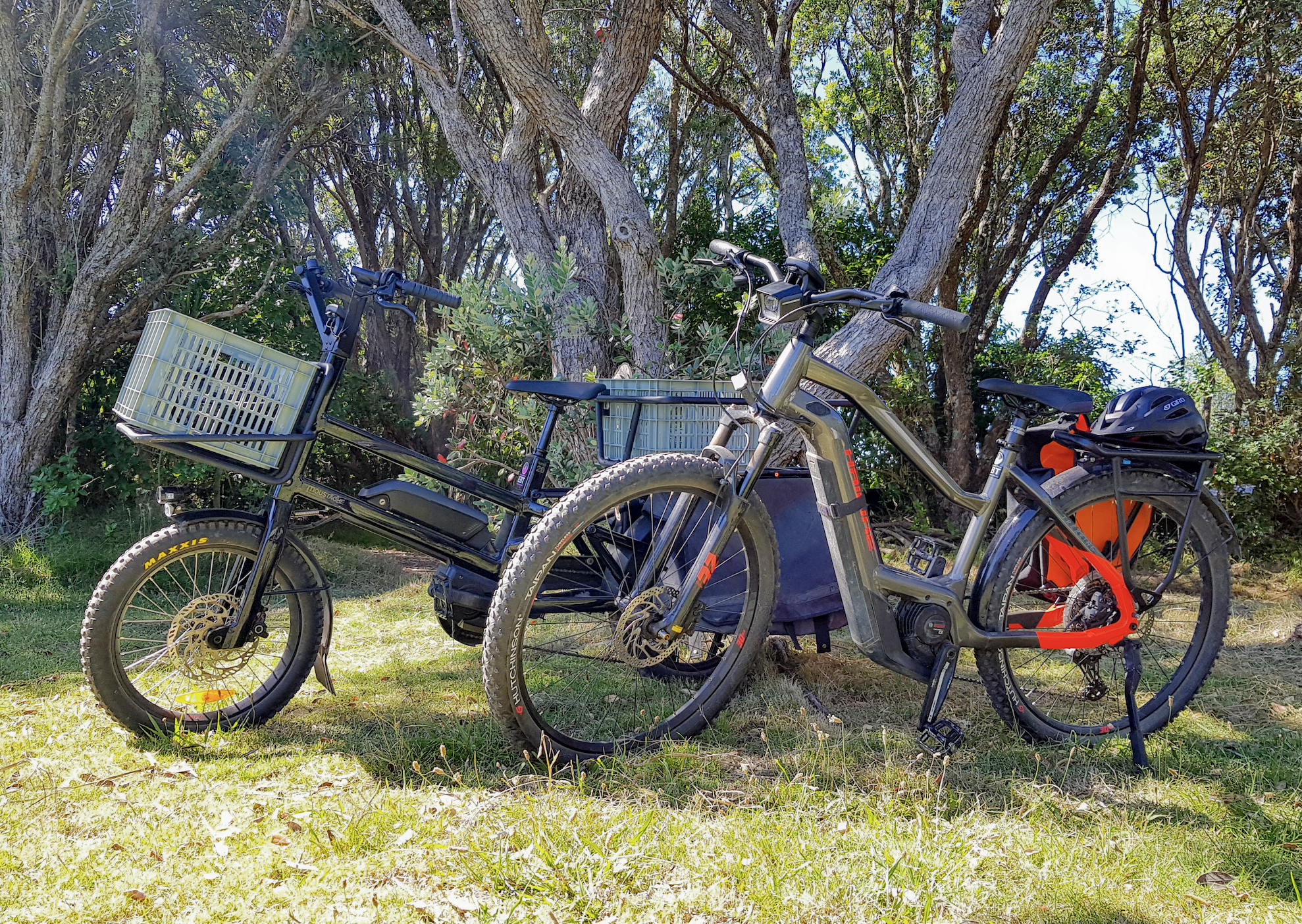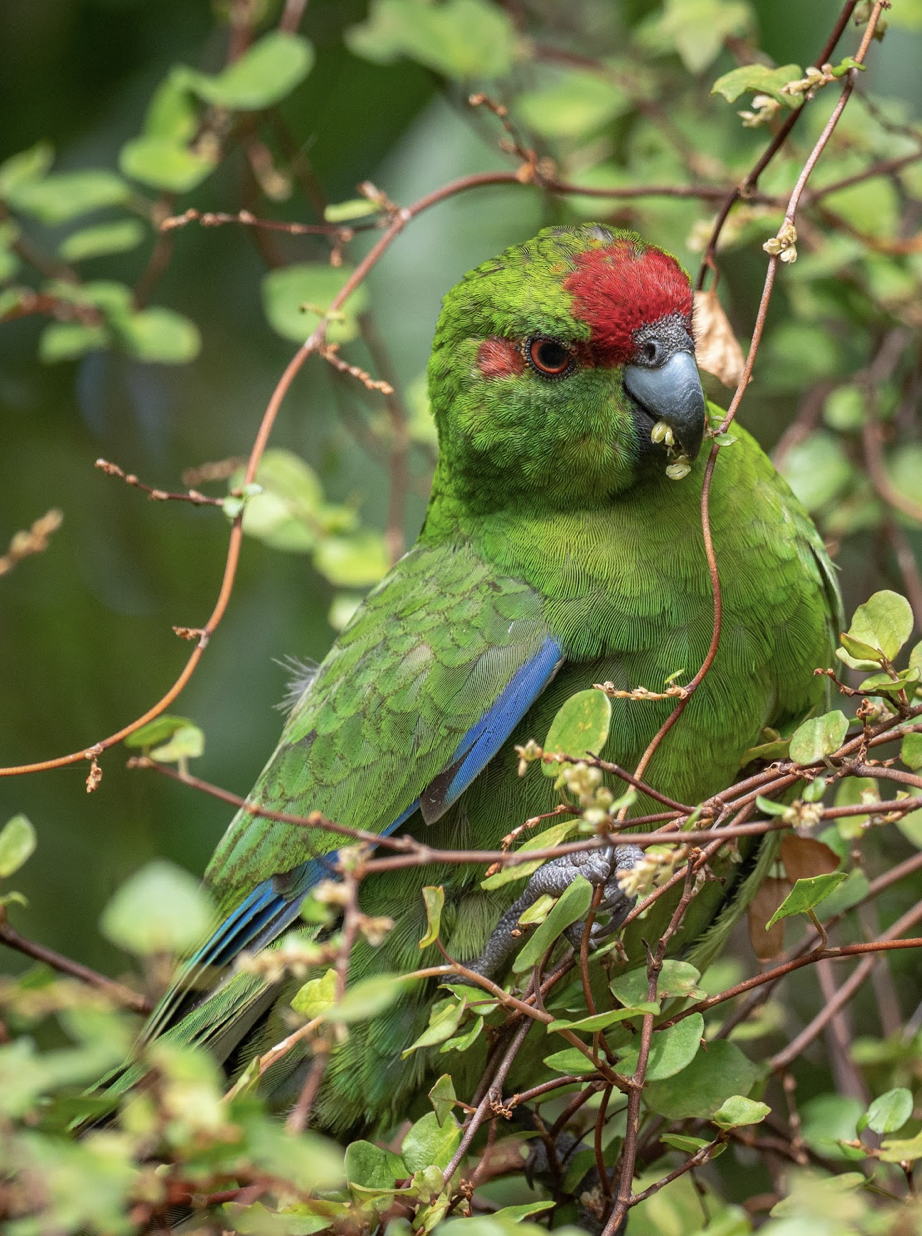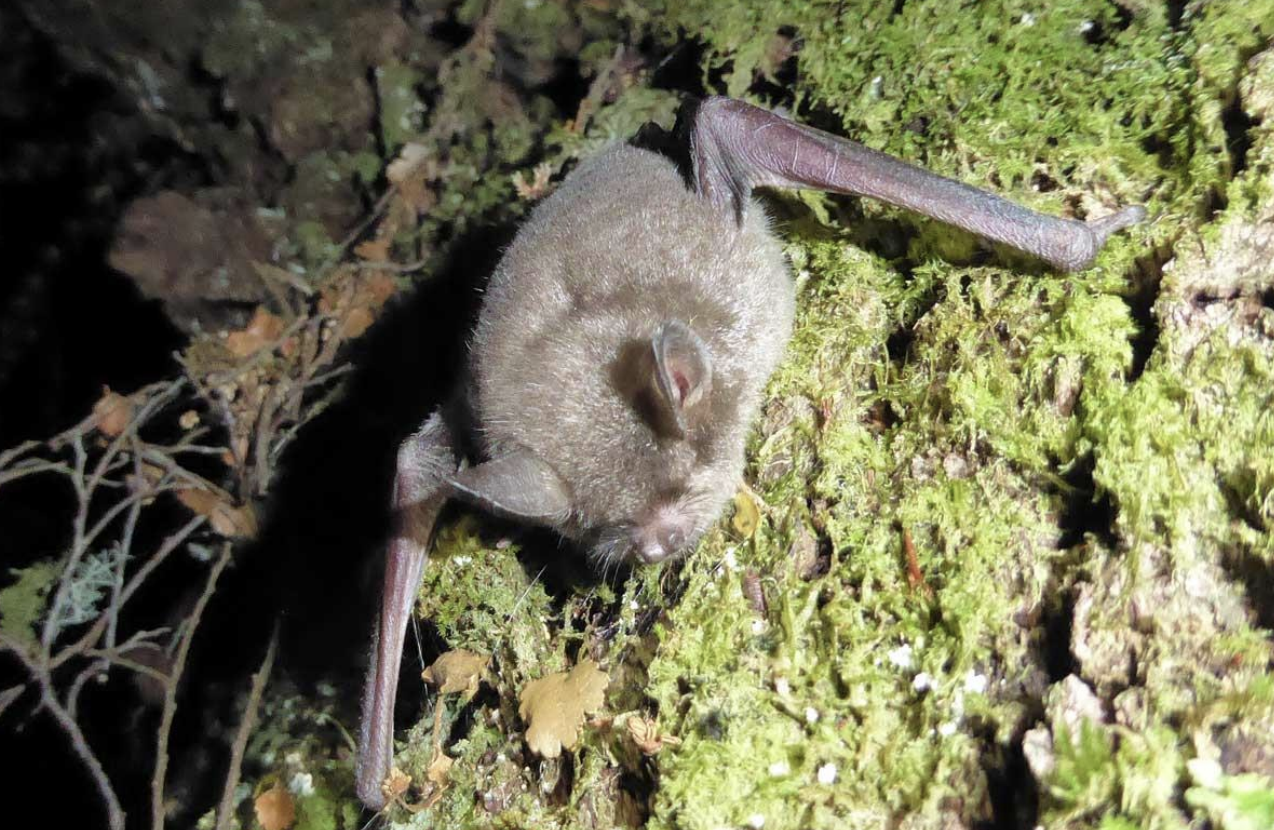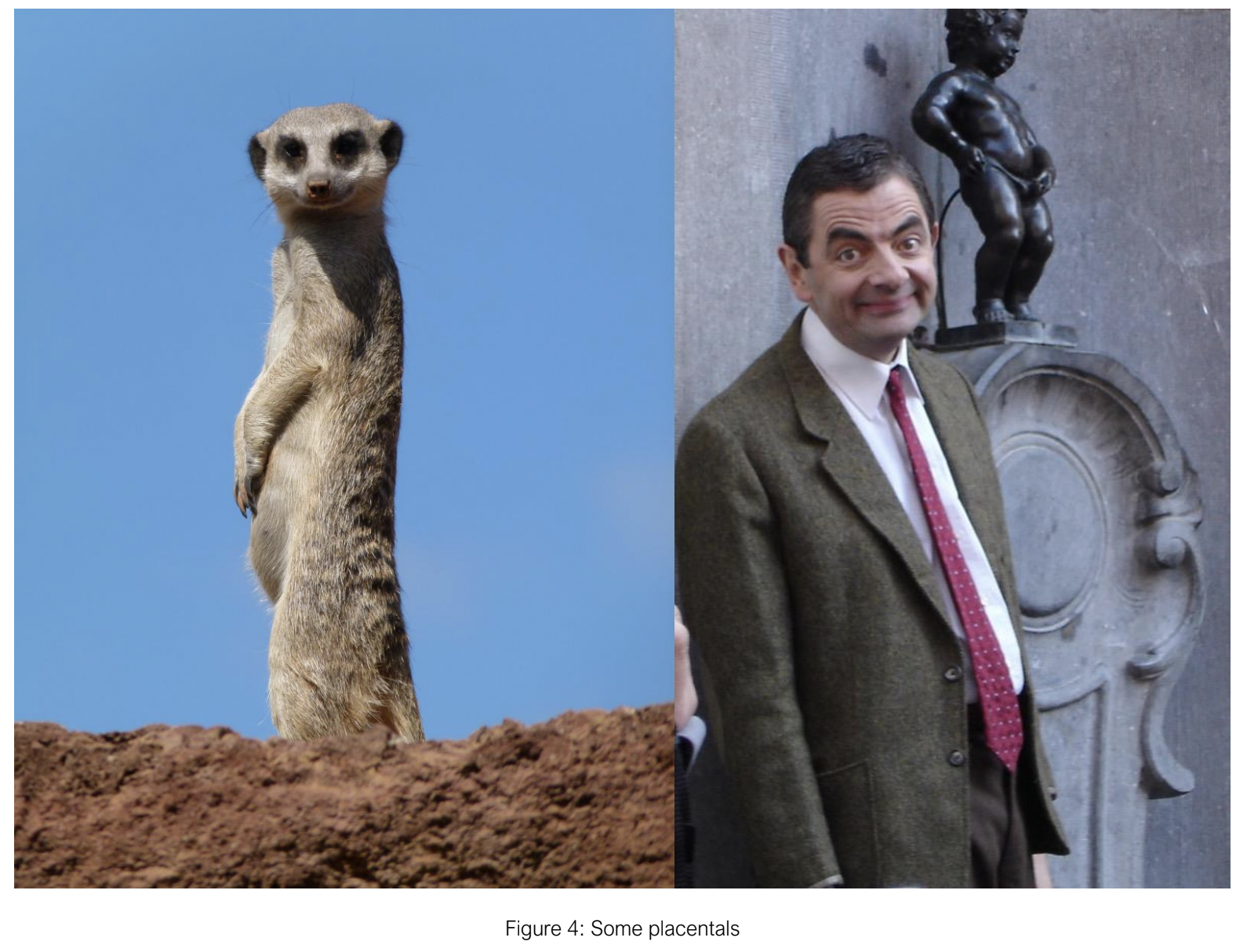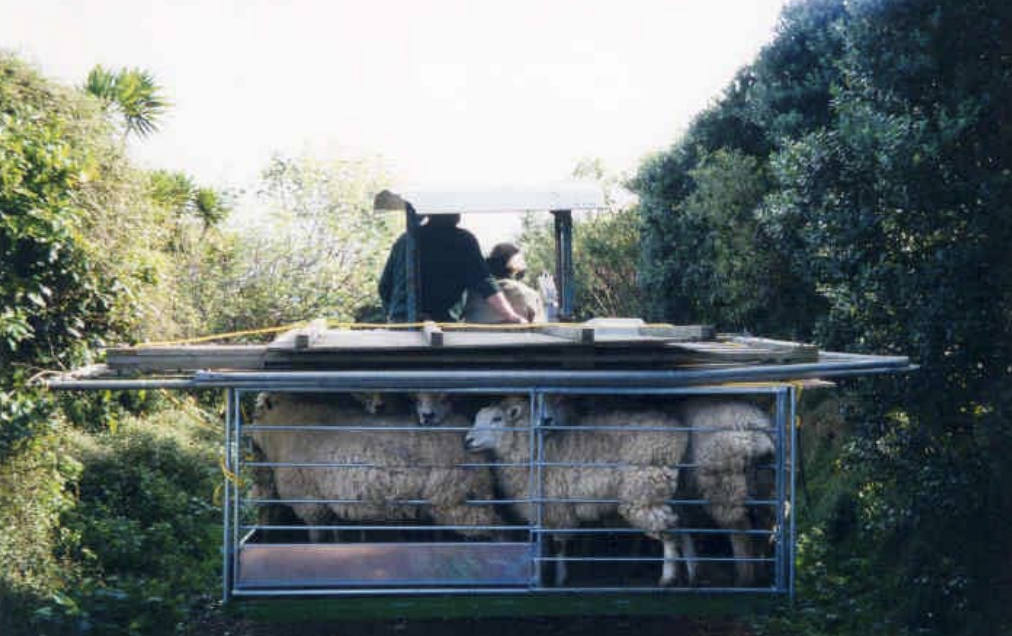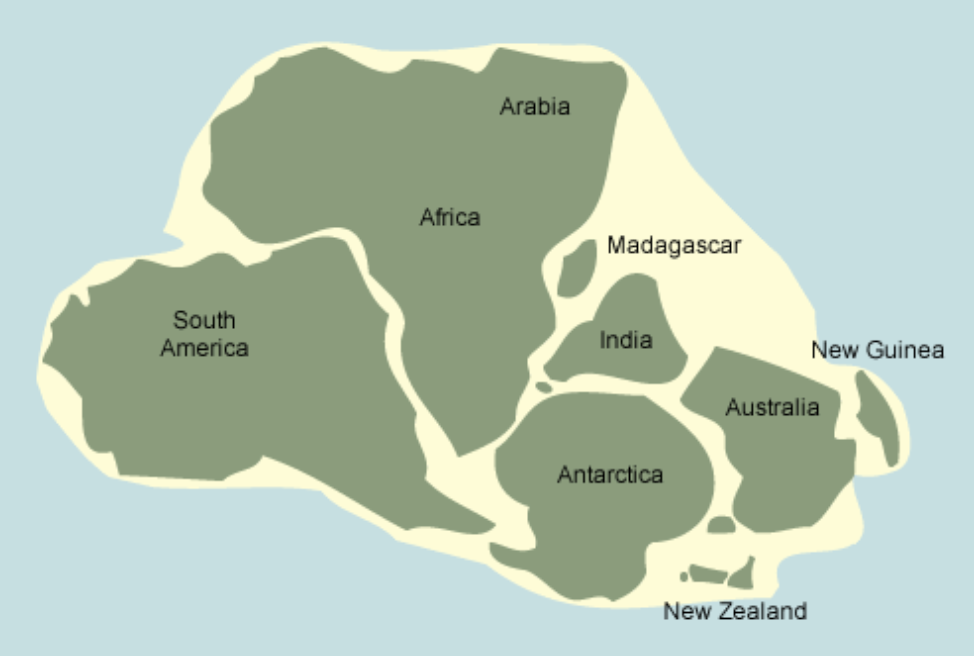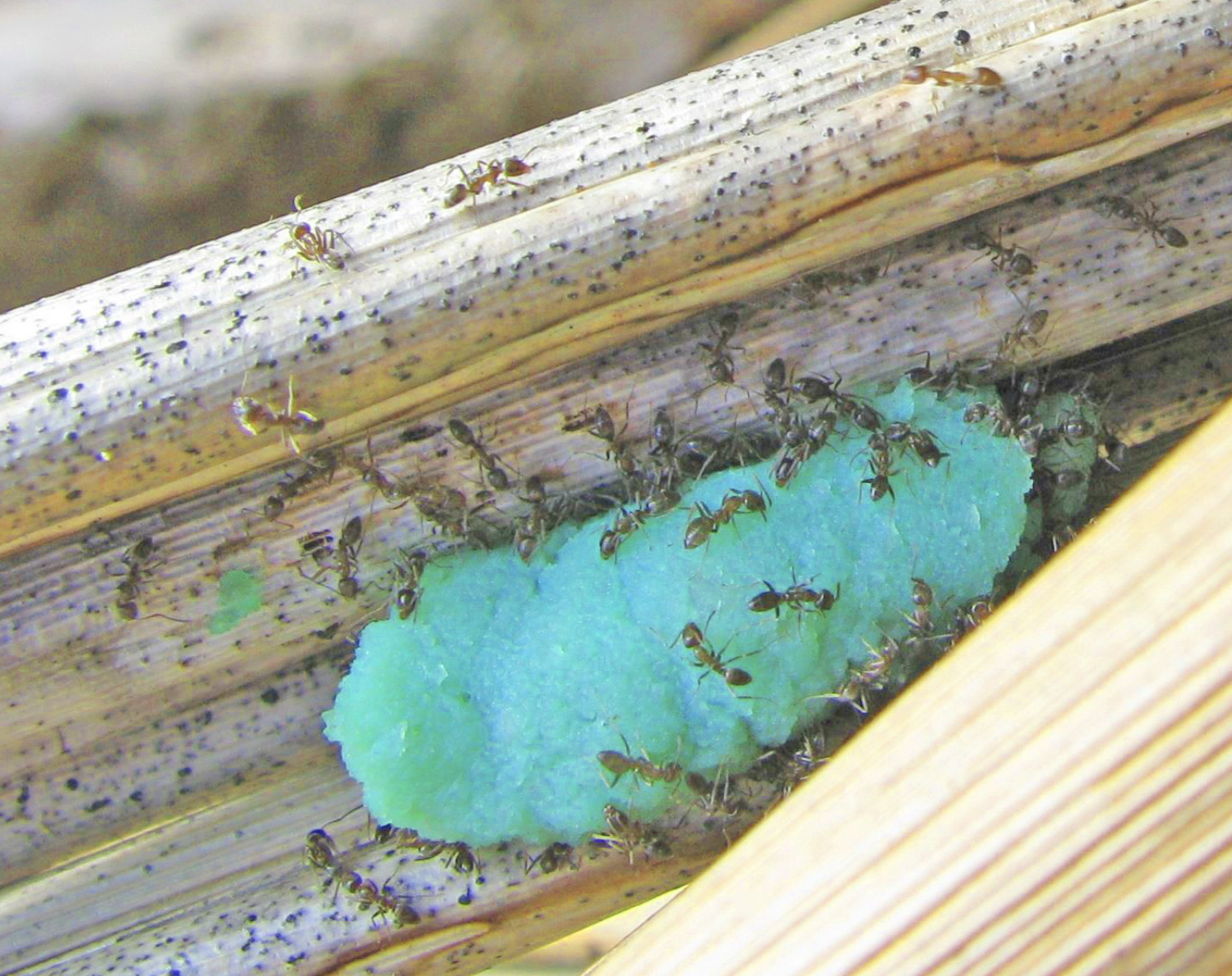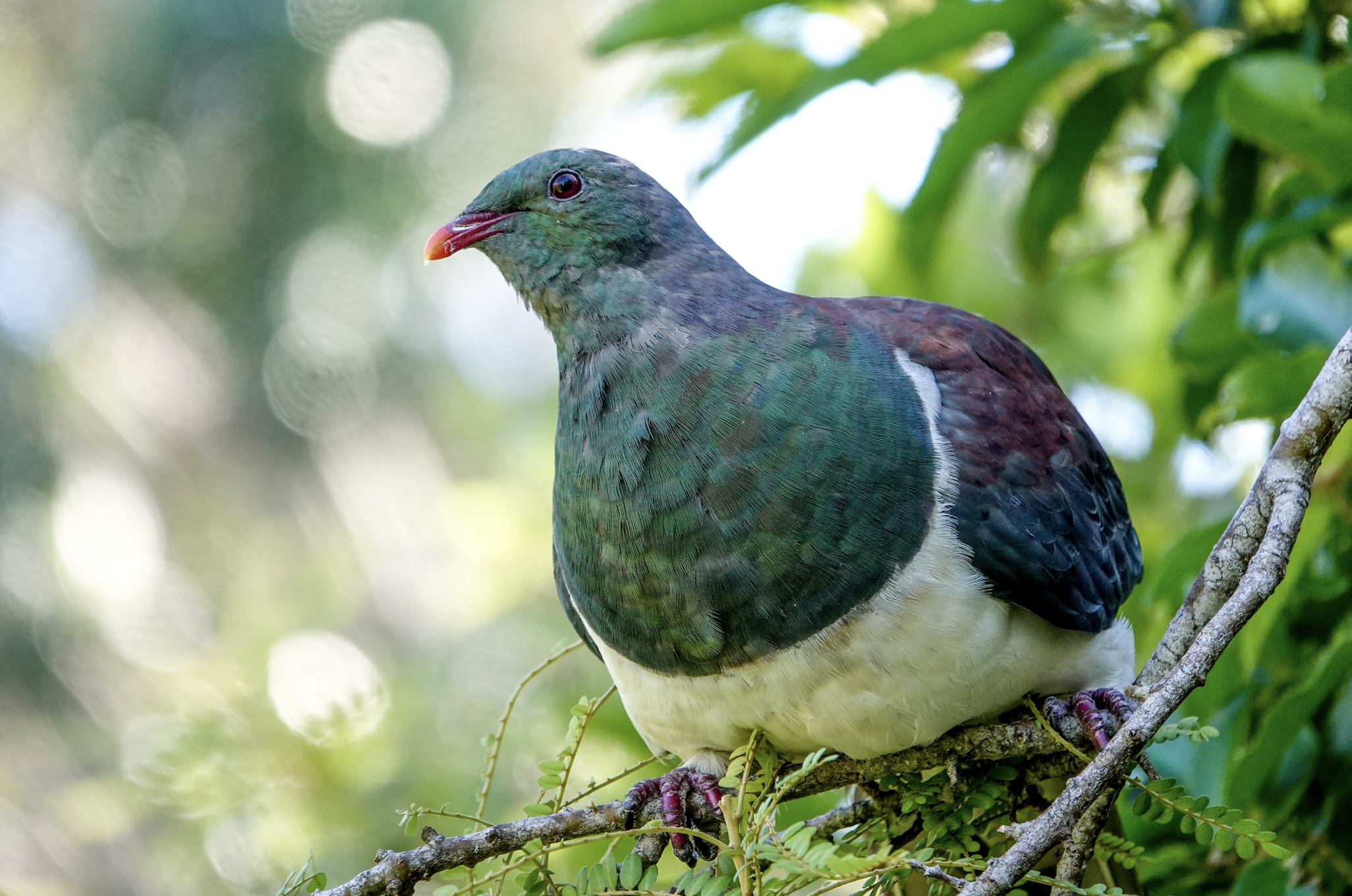Visitor Centre Opening Springs Surprise
Visitor Centre Opening Springs SurpriseFrom the Supporters of Tiritiri Matangi Archives: Dawn Chorus, December 2005, Bulletin 63Photo credit: Janet PetricevichThe official opening of Tiritiri Matangi lsland’s new Visitor Centre was attended by more than 100 Supporters and friends in early November. As Ray and Barbara unveiled the plaque, they were surprised to discover that the centre was named in their honour – The Ray and Barbara Walter Visitor Centre. To the delight of everyone at the official opening of the new Visitor Centre on Tiritiri Matangi, Department of Conservation Rangers Ray and Barbara Walter, were unaware that the Visitor Centre was to be named after them. As they pulled the cords to reveal the overhead plaque, their surprise was met with warm applause from the crowd. Speakers and a dedication from Supporters’ founder Jim Battersby, preceded the unveiling and the cutting of a red ribbon by Ray and Barbara. First of the invited guides to speak was the Minister of Conservation Chris Carter, who retains the Conservation portfolio for a second term. He reflected on the Visitor Centre as part of the commitment to the importance of conservation education for present and future generations. “Tiritiri is an international icon for restoration conservation, and at international conservation events I often talk about what has…
E-Bikes and Solar Power
E-Bikes and Solar Power: How DOC and Volunteers Are Cutting Carbon on Tiritiri MatangiPhoto credit: Janet PetricevichThe Department of Conservation (DOC) is taking meaningful steps toward a greener future, starting with two wheels and the sun. As part of its mission to reduce carbon emissions and model sustainable practices, DOC has added two electric bikes to the transport fleet on Tiritiri Matangi Island. One is a cargo e-bike, perfect for transporting gear and tools, while the other is a standard e-bike used by rangers and Supporters of Tiritiri Matangi (SoTM) volunteers to move around the island efficiently, no petrol required.. The e-bikes are powered by solar energy. Tiritiri Matangi Island is equipped with solar panels that generate electricity for island operations. That means these e-bikes are not only replacing vehicle trips but are being charged with 100% renewable energy. A Solar-Powered Island Tiritiri Matangi is no stranger to solar energy. The iconic Tiritiri Matangi lighthouse, New Zealand’s oldest operating lighthouse still in use, has been fully automated and solar-powered since 1990. Its solar panels charge batteries that power the lighthouse’s light assembly. In 2002, the original system was upgraded to a modern rotating beacon, further improving its reliability and efficiency. Together, the solar-powered lighthouse and electric bikes…
Fifty years since the translocation of kākāriki/ red-crowned parakeet
Fifty years since the translocation of kākāriki/ red-crowned parakeetAuthor: Dick Veitch New Zealand ecologist and ornithologistFrom the Supporters of Tiritiri Matangi Archives: Dawn Chorus, 138, August 2024Header photo credit: Geoff BealsTo celebrate this milestone, we asked Dick Veitch, who was involved in the translocation, to share his memories of that time. Visitors to this island haven have now seen kākāriki as they surely were over mainland New Zealand before the arrival of humans and their accompanying pests. On Te Hauturu-o-Toi / Little Barrier Island, kākāriki survived with cats and kiore as predators. On the Hen and Chicken Islands, they survived with only kiore as a predator. On Macauley Island, they survived with goats and kiore and no trees, but on nearby forested Raoul Island, they were eradicated by a combination of goats, cats, and two rat species. When the goats were eradicated, kākāriki were again present in the forest, but we doubt that they were breeding. When the cats and rats were also removed, kākāriki were again abundant birds in the forest. Like so many of our birds, kākāriki have two basic needs to overcome when faced with predation and competition: food and nesting. One of their preferred feeding habits is to scavenge for fallen seeds among the leaf litter. In this, they compete with kiore, who also scavenge for…
Mammals (Part 3): Mammals in Pre-Human New Zealand
Mammals (Part 3): Mammals in Pre-Human New ZealandAuthor: Malcolm Pullan, Volunteer GuideIf you’re a New Zealander you will “know” that prior to the arrival of humans there were no mammals in New Zealand apart from bats. “Knowing” this is part of the DNA of being a New Zealander, like knowing that kiwi don’t fly and the All Blacks play rugby. However, if you had no connection with New Zealand whatsoever, and just so happened to have read Parts 1 and 2 of this series of articles on mammals, you wouldn’t be expecting that answer at all. You would be expecting me to say there are, or at least, were mammals in New Zealand (apart from bats) prior to the arrival of humans. And you would be perfectly right—and most New Zealanders perfectly wrong. New Zealand did indeed have mammals (other than bats) prior to the arrival of humans. You don’t believe me? Not even if I say it with a smile? Let me try and convince you in other ways then… Let’s summarise where we got to in the previous articles. Once upon a time New Zealand was joined to Australia and Antarctica. New Zealand began to separate from Australia/Antarctica about 105 MYA (million years ago) and continued to do so until sea completely separated them about 80 MYA, with the gap increasing substantially over the next 20+ million years. Globally, mammals evolved about 205 to 210 MYA. Mammals have been in…
Mammals (Part 2): Evolution of Mammals
Mammals (Part 2): Evolution of MammalsAuthor: Malcolm Pullan, volunteer guideDate: October 2024According to a very unscientific survey carried out by examining my gut feeling, many people can answer the question, “When did mammals first appear?” Further similar unscientific analysis reveals that most of these answers will be something like, “About 60 MYA (million years ago), when dinosaurs became extinct”. Unfortunately, this common answer is incorrect (in fact, it’s not even true either…). The purpose of this article is to put the record straight—and to give a little evolutionary history of mammals as whole, concluding with a little look at the evolutionary history of Australian mammals. The story of New Zealand mammals will follow on from this in final part of this series of articles. Before beginning the discussion, I should warn you that the evolutionary history of mammals is an ever-changing minefield. There are controversies over dating and controversies of definitions and names of different groups of mammals, on top of which new information is popping up all the time to throw spanners in the works. Rather than trying to weigh up the recent academic literature myself (which is never really wise for a layperson), in what follows I will leave it to the experts (i.e. a well-respected and recent university-level textbook (1)). With that proviso in…
It’s Time for Ewe to Go
It's time for ewe to goAuthor: Ray Walter, last lighthouse keeper and first Tiritiri Matangi Island RangerFrom the Supporters of Tiritiri Matangi Archives: Bulleting 51, Spring 2002As part of the revegetation of the south eastern paddock, it has been necessary to reduce the number of sheep. Approximately 60 sheep had been retained to keep the grass down until we were ready to replant the area.
It has been decided to keep a few sheep to graze the area between the lighthouse and the foghorn. Eventually, even these will go and all fences will be removed.
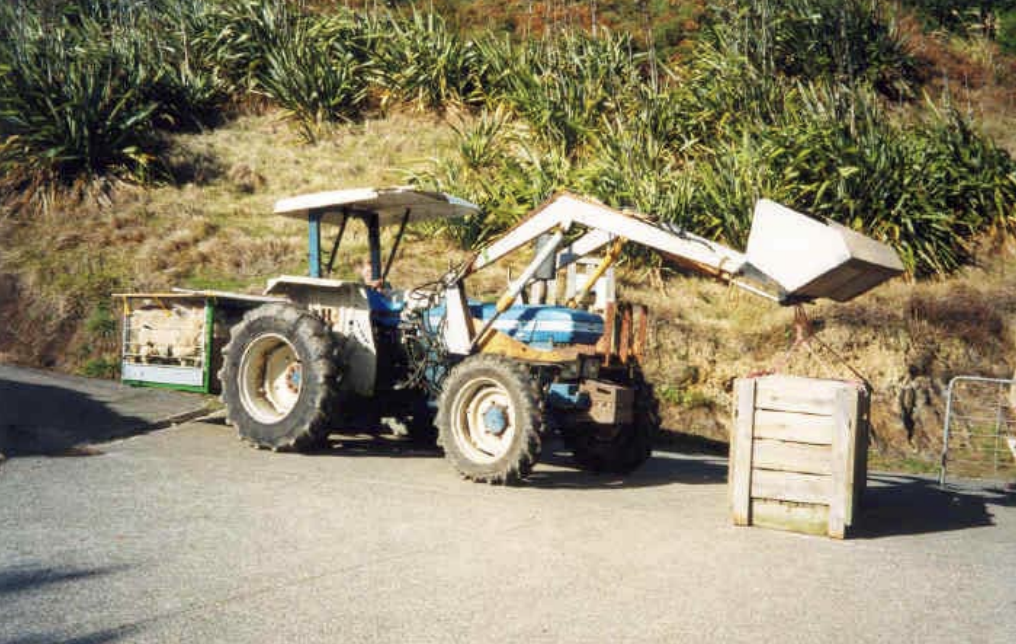
Mammals (Part 1): New Zealand’s Isolation from Gondwana
Mammals (Part 1): New Zealand's Isolation from GondwanaAuthor: Malcolm Pullan, GuideDate: October 2024As a guide, one of the first things I tell international visitors to Tiritiri Matangi is that New Zealand has no native land mammals apart from bats. I suspect many other guides do the same. It certainly is quite an unusual fact and accounts for so much of why New Zealand bird life (and indeed all New Zealand life) is the way it is. I wonder how many guides go on to explain the absence of land mammals by some variation of the statement that New Zealand broke away from the rest of the world about 60 MYA (million years ago) before mammals evolved? I know I did when I first started guiding. It was one of those statements that I sort of grew up with and didn’t think to question. I wasn’t guiding for long though before I did begin to wonder how true that statement really was, and so I began to dig a little deeper. It turns out there are several things wrong with the crude statement: “New Zealand broke away from the rest of the world about 60 MYA before mammals evolved.” The truth—or at least the best current guess at the truth (because science is always evolving as new facts come to light)—is even more fascinating. This article and the next two give a summary of the latest thinking on the story of mammals in New Zealand. This story goes under three…
Argentine Ants on Tiritiri Matangi
Argentine AntAuthor: Chris Green, Department of ConservationDate: From the Supporters of Tiritiri Matangi Archives, Dawn ChorusHeader photo: Chris GreenSupporters of Tiritiri Matangi Archives, Dawn Chorus, Autumn 2000 Ten years ago a new immigrant species slipped quietly into New Zealand, arriving in Auckland and establishing itself in Onehunga, just prior to the Commonwealth Games in 1990. That immigrant was the Argentine ant (linepithema humile) and initial surveys quickly revealed it to be quiet widespread. It was decided that there would be no welcoming committee dishing out pesticide sprays, or free food laced with insecticide, as has been the scenario when insect pests such as fruit fly or tussock moth arrived. Those entomologists “in the know” however, knew that New Zealand had come of age with this arrival of one of the world’s most invasive pest ant species. The Argentine ant is a native of South America and has been invading overseas countries, including North America, Hawaii, South Africa, and Australia, for more than 50 years. Since its arrival in New Zealand, Argentine ant has spread to many areas in the Auckland Region, established itself in Tauranga and Morrinsville, and has recently been reported from Christchurch, Gisbourne and west of Dargaville. Now it has been found on Tiritiri. Argentine ants are small-two to three…
MinterEllisonRuddWatts (MERW), our primary corporate partners
MinterEllisonRuddWatts (MERW), our primary corporate partnersAuthor: Debbie Marshall, Operations ManagerDate: September 2024Header photo: Jonathan MowerMinterEllisonRuddWatts (MERW), are our primary corporate partners. Their stated purpose is “Working with you to help shape New Zealand’s future”. They are very involved with Supporters of Tiritiri Matangi (SoTM) under the auspices of their Community Investment Programme. At the recent SoTM AGM, Stephanie de Groot, Partner; environment, planning and resource management, told members that “.. the pillars of our sustainability strategy are Environment, People and Practices. These focus on responsible consumption and production of goods and services, striving towards nett zero by 2050, being an inclusive and equitable place to work, doing what matters for their people and communities, and partnering with clients and others to tackle sustainability issues”. Their legal team have looked at our procedures in terms of the Health & Safety Act 2015, the proposed accommodation facility and the concessions SoTM has with the Department of Conservation. They also offer support in areas of Human Resources, Finance, Marketing, Business Development and IT. Since they joined up in June of 2023 most of their partners and staff have come to the motu, in groups of 10-12, working with our guides doing track trimming…
Flower feast week on Tiritiri Matangi as the island begins its spring flower display
Flower feast week on Tiritiri Matangi as the island begins its spring flower displayAuthor: Jean Goldschmidt, guideDate: 15th August 2024Header image credit: Kay MiltonFlower feast week on Tiritiri Matangi as the island begins its spring flower display. Carpets of yellow cover the tracks under kowhai trees as the tūī rummage and attack each flower sending discarded petals to the ground. Too soon these delicious golden bell-like flowers will be gone leaving the ravaged trees to begin their cycle of regrowth once more. The children in my group today do not hunt for the spectacular but are seeking the more modest flowers of Aotearoa, which they find hiding in the foliage. Our insect-pollinated flowers may be tiny but they are significant as the birds feed on their pollen and litter the ground with the carcasses. As the only group walking up the road these exuberant, energetic ten-year-olds make the most of the freedom to leap ahead when they glimpse a bird, call out a name, listen for the call of the tieke or rush to the record sheet to check off their sighting. Standing still is impossible so any offering from me is brief. After the first experience with the magnifying glasses, they desire nothing else. Their fascination knows no bounds as they hold the glass to every leaf, feather, stalk, or stone. Under a pūriri, flush with ruffled new dark green…
